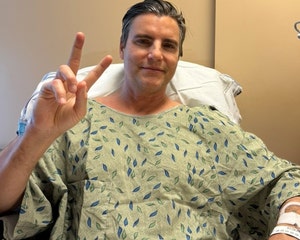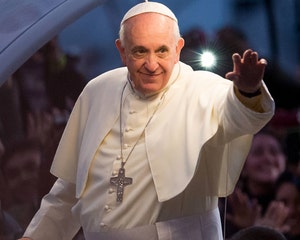After 12 years as the spiritual head of the Catholic Church, Pope Francis passed away on Easter Monday at the age of 88 at his residence in the Vatican.
After months of reported health concerns, Pope Francis, the 266th pope of the Catholic Church, passed away on Easter Monday. He was 88.
“Dearest brothers and sisters, with deep sorrow I must announce the death of our Holy Father Francis,” said Cardinal Kevin Farrell, Camerlengo of the Holy Roman Church in a statement released through Vatican News.
“At 7:35 this morning, the Bishop of Rome, Francis, returned to the house of the Father,” the statement continued. “His entire life was dedicated to the service of the Lord and of His Church. He taught us to live the values of the Gospel with fidelity, courage, and universal love, especially in favor of the poorest and most marginalized.”
“With immense gratitude for his example as a true disciple of the Lord Jesus, we commend the soul of Pope Francis to the infinite merciful love of the One and Triune God,” the statement concluded.
According to TMZ, reports began circulating in late February that the pontiff was preparing for his death after he’d been hospitalized earlier that month with double pneumonia while also being treated for bronchitis.
The death of the Pope triggers a centuries-long tradition as the Catholic Church begins the process of celebrating and mourning the pontiff, and determining who will be the next spiritual leader of the Church.
Getty
Pope Francis Dead at 88: Barack Obama, Eva Longoria and More React
View Story
The Day of the Pope’s Death
As noted above, Pope Francis was formally announced dead by the Cardinal Camerlengo, which is part of the tradition of the Catholic Church. He will hold a significant role during the interregnum period before a new Pope is announced.
In the past, the camerlengo would tap a silver hammer on the pope’s head while calling out his baptismal name three times to confirm his final passing.
As noted by CBS News, this tradition has been abandoned, with a doctor on hand to officially determine death and sign a death certificate. No autopsy is performed, notes The BBC.
Once the pope has been officially declared dead by the camerlengo, he then breaks the pontiff’s Fisherman’s ring, destroying the dyes inside that are used to make the papal seal. This marks the symbolic end of the former pope’s pontificate. The ring is among those symbolic items that will be buried with Pope Francis.
Hours after his death, Francis was to be laid in a coffin in a chapel at his residence at 20:00 local time, with the carmelengo presiding over those rites. It is also his responsibility to lock and seal the pope’s residence.

What Colin Egglesfield Learned from Beating Cancer Three Different Times (Exclusive)
View Story
The Pope Lies in State
Following his death, the pope is traditionally transported to St. Peter’s Basilica where his body will lie in state. Historically, including as recently as Pope Benedict XVI’s passing in 2022 (he stepped down from his papal office in 2013), thousands will make their way to Vatican City to honor the late pope.
According to the report on Vatican News, Matteo Bruni, the director of the Holy Sees Press Office, told the media, “The translation of the Holy Father’s mortal remains to the Vatican Basilica, for the veneration of all the faithful, may take place on the morning of Wednesday, April 23, 2025.”
Those arrangements would be finalized on Tuesday, he added.

Jenna Fischer Reveals Post-Chemo Hair Growth Update, Stars Share Love & Support
View Story
Novemdiales Mourning Period
Following papal death, there is a nine-day period of mourning called Novemdiales (which translates generally to “nine days”). During this centuries-old tradition, flags will be flown at half-staff in the Vatican and the doors of St. Peter’s Basilica will be closed.
Within this period, the pope’s formal funeral takes place — it is to be held four to six days after his death, per Church tradition. The service will be held either in St. Peter’s Square, weather permitting.
The funeral will occur in three phases: the preparation of the body, the viewing of the body, and the burial. Heads of states, religious leaders, and other dignitaries are expected to attend.
The pope’s coffin is carried through what is referred to as the “door of death” to the left of the main altar, at which time a single bell tolls. It is then lowered into a marble sarcophagus and covered by a stone slab.
Per his request, Francis has declined to have his body put on a raised platform for viewing, with BBC News reporting this is in keeping with his rejection of much of the Catholic Church’s pomp and ceremony. Instead, mourners will be able to see his body inside his coffin, which will have the lid removed.
As noted by CBS News, many recent popes have requested to be buried beneath the Basilica there. Pope Francis, however, asked if he could be laid to rest in Rome’s St. Mary Major Basilica, requesting he be buried in a simple wooden casket.

Blue Origin/X
Lauren Sánchez and Gayle King Address Blue Origin Flight Backlash
View Story
The Papal Conclave
As dramatized in Oscar-winning 2024 film Conclave, the Catholic Church has a longstanding process for how it selects its next leader. During the Novemdiales, cardinals from across the globe will converge in Rome for the funeral.
They will meet and begin presenting what are essentially “campaign” speeches, such as it is, for their vision for the church. After any of those so inclined for consideration have made their statements, the conclave will begin.
Generally occurring within 15 and 20 days after the pope’s death, the College of Cardinals seclude themselves from the world and begin the process of discussing and ultimately voting for the next pontiff.
Cardinals under the age of 80 are eligible to, which is about 135 of them at this time, while all cardinals (252) are able to take part in debate and discussion.
The ballot casting happens behind closed doors in the Vatican’s Sistine Chapel with the College of Cardinals cut off from the rest of the world. The vote and discussion repeats until one candidate emerges with a two-thirds-plus-one majority.
After each vote — of which there are generally two per day after the first day — the ballots cast are burned, sending up black smoke to signify they have not yet reached a choice. The voting can take several days as it will continue until the reach the required consensus.
Once the required majority is reached, the cardinals will burn the ballots and send up a plume of white smoke to announce that a new pope has been selected.

Hulu/Toofab
Handmaid’s Tale Stars Tease ‘Devastating’ Aunt Lydia Moments, Elisabeth Moss Directing (Exclusive)
View Story
The New Pope
Usually within an hour of the white smoke, the new pope will appear on the traditional balcony overlooking St. Peter’s Square. The senior cardinal of the conclave will say, “Habemus Papam” — Latin for, “We have a pope.”
At that point, he will introduce the new pontiff by his chosen papal name, which can be his given name, but can also be a name stepped in tradition within the church, or even in honor of a previous pope. Pope Francis, born Jorge Mario Bergoglio, chose his name in honor of St. Francis of Assissi.
While any Roman Catholic man who has been baptized is technically eligible to become the pope, cardinals generally choose one among themselves to lead the church. The majority of popes historically have been Italian, or European. Francis was the first-ever South American pope, though, suggesting these traditions may be shifting.

Getty
Penn Badgley Reveals Past Struggles with Body Dysmorphia: ‘I Hated My Body’
View Story
Content shared from www.toofab.com.

